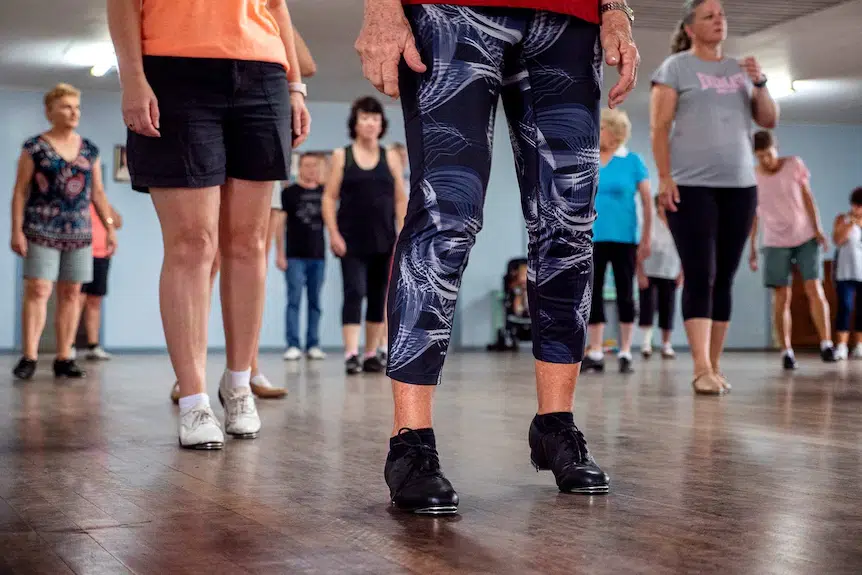Exercise for Depression by Age and Gender
Move Your Mood: Research Reveals That Exercise Helps Combat Depression, But Gender and Age Are Important
Depression has a lasting effect on mood, energy levels, and general well-being for a large number of people. It’s critical to find solutions for effective treatment. Positive news from a recent study: exercise can be a potent weapon in the fight against depression, albeit the kind and quantity that works best for you may vary based on your age and gender.
Table of Contents

Using Exercise as a Depression Weapon: Getting Your Sweat On for Mental Wellness
Exercise for Depression by Age and Gender
Depression is a complicated illness with many underlying causes. However, evidence supporting the beneficial effects of exercise on mental health is mounting. Research indicates that physical activity can:
- Boost mood-regulating chemicals: Engaging in physical exercise causes the body to release endorphins, which are organic mood enhancers that help fight anxiety and despair.
- Decrease stress hormones: Physical activity aids in reducing cortisol levels, a stress hormone associated with sadness.
- Encourage self-esteem: Exercise on a regular basis helps boost one’s self-esteem and body image, both of which are severely impacted by depression.
- Boost concentration and sleep quality: Exercise can help with both focus and sleep quality, which are important for controlling the symptoms of depression.
Choosing Your Fitness Fit: Strategies Unique to Age and Gender
Exercise for Depression by Age and Gender
The new study broadens our understanding of the connection between depression and physical activity. It implies that the kind and level of exercise may differ based on age and gender in order to achieve the best advantages.
Although the whole study findings are not yet available, the following general recommendations are available:
- Younger individuals: For younger individuals who are depressed, team sports or high-intensity interval training (HIIT) may be especially helpful. These pursuits can offer a social and physical outlet for stress relief and mood enhancement.
- Older persons: Yoga, swimming, and brisk walking are examples of moderate-intensity exercise regimens that can be very beneficial for older persons. There are physical benefits to these sports without putting too much stress on the body.
- Women: Research indicates that a mix of aerobic and strength training activities may be a good way for women to manage the symptoms of depression.
Exercise for Depression by Age and Gender
Remember that these are general tendencies. Your unique degree of fitness, your personal preferences, and any underlying medical concerns will determine the optimal workout regimen for you. Before beginning a new fitness programme, always get medical advice, especially if you have any concerns.
Don’t Just Sit There: Various Workout Choices for All Types of People
Exercise for Depression by Age and Gender
The good news is that there isn’t a single, universally effective way to exercise. Countless activities can help you reach your fitness objectives and enhance your mental health:
- Team sports: The companionship and social connection that these activities foster can be very helpful in overcoming depression.
- Dancing: Dancing increases heart rate and releases endorphins in a joyful and energising way. For every age and skill level, there is a dancing style.
- Walking or hiking: It’s often known that being in nature improves one’s mood. For a double dose of wellbeing, pair it with hiking or walking.
- Yoga and Pilates: are examples of mind-body workouts that integrate physical postures with breathing techniques to help people relax and reduce stress.
- Strength training: Increasing muscular mass can improve mood and energy levels. Heavy weights are not necessary for strength training; resistance bands or bodyweight exercises are excellent substitutes.
Exercise for Depression by Age and Gender
Finding enjoyable things that you can fit into your daily schedule is crucial. As your fitness level increases, start out slowly and then increase the duration and intensity of your workouts.
Outside the Gym: Exercise-Counting Activities
Exercise for Depression by Age and Gender
Don’t restrict yourself to routines found in the gym. Numerous commonplace pursuits can help you reach your fitness objectives:
- Choose the steps: Whenever feasible, choose the stairs over the lift.
- Park further away: Make it a challenge to park farther away from your location and increase your walking distance.
- Perform housework with enthusiasm: Invest your energy in household chores; tidying the house, planting a garden or doing garden work can all help you get going.
- Take short exercise breaks: throughout the day to get your blood circulating and clear your mind if you have a desk job.
Exercise for Depression by Age and Gender
Your level of overall physical activity can be considerably raised by adding these activities into your daily schedule.
Going Ahead: Developing an Exercise Habit for Better Mental Health
Exercise for Depression by Age and Gender
While it’s not a miracle cure for depression, exercise can be an effective tool in your mental health toolbox. Here are some pointers for developing a long-lasting habit of exercising:
- Establish reasonable objectives: Start out small and work your way up to higher intensity and longer workouts. Maintaining consistency is essential.
- Find a workout partner: Exercising with a friend or partner can help you stay accountable and motivated.
- Monitor your advancement: To keep tabs on your development and recognise your accomplishments, use a fitness tracker or app.
- Treat yourself: Reward yourself for your workouts to motivate yourself.


